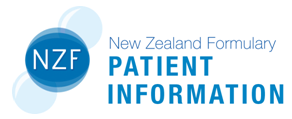What does it do?
Filgrastim is used in the treatment or prevention of infections by increasing the production of white blood cells.
How is it given?
Filgrastim is usually injected under the skin. Sometimes it is injected into a vein.
What if you forget a dose?
Inject the missed dose as soon as possible. If it is close to the time for your next dose, skip the missed dose and carry on as normal. Do not inject two doses at the same time.
Can you take other medicines?
Tell your pharmacist or doctor about all medicines or treatments that you may be taking, including vitamins, herbal products or recreational drugs.
What side effects might you notice?
| Side Effects | Recommended action |
|---|---|
|
Trouble breathing, swollen lips, tongue, throat or face Chest pain, fast or irregular heartbeat Fever |
Tell your doctor immediately |
|
Nose bleeds, small red or purple skin spots Bone pain |
Tell your doctor |
|
Hair loss or thinning Dizziness, headache Pain, tenderness or redness at injection site |
Tell your doctor if troublesome |
If you notice any other effects, discuss them with your doctor or pharmacist.
Other information:
- Tell your doctor if you have problems with your spleen, sickle cell disease, osteoporosis (weak bones) or rheumatoid arthritis.
- Tell your doctor if you are pregnant, planning to become pregnant, or breastfeeding.
- This medicine is also known as granulocyte-colony stimulating factor (G-CSF).
This leaflet contains important, but not all, information about this medicine.
Prepared by the MyMedicines Committee at Christchurch Hospital, Te Whatu Ora - Waitaha, New Zealand. December 2017
For more general information about this sheet and its contents, see: What does a My Medicines sheet cover?
Te Reo Māori
Te Reo Māori information sheets supported by Health Quality and Safety Commission New Zealand
Web links for this sheet in different formats
Click on buttons to copy web addresses for this leaflet:
If your browser does not automatically copy these links use its copy command instead.
About My Medicines
My Medicines Patient Information Leaflets (PILs) contain important, but not all, information about the medicines they describe.
For more information about the sheets, see: What does a My Medicines sheet cover?
My Medicines is developed by a team at Te Whatu Ora – Waitaha. Our team is made up of doctors, pharmacists, and a non-medical person to help us keep to plain language. We also discuss our information with specialist health professionals or groups when needed

